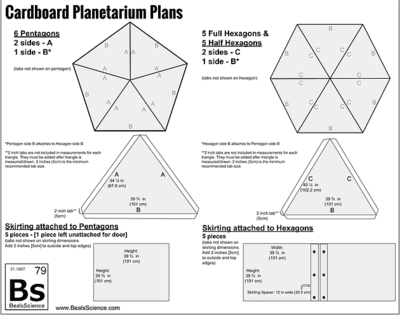- Since I decided to make the at-home planetarium as a polyhedron, I searched online for a good polyhedron model so I can design the net of the polyhedron.
- From the following site, I was able to download the diagram of the net. Since it cannot be a closed figure, for I want to place the light source, this model worked perfectly for my project.

- Reference Link: https://www.bealsscience.com/single-post/2016/04/04/Make-your-own-Cardboard-Geodesic-Dome-Planetarium-and-Projector *** the measurements would need to be scaled differently in order for you to create something the size of your preference.











Comments